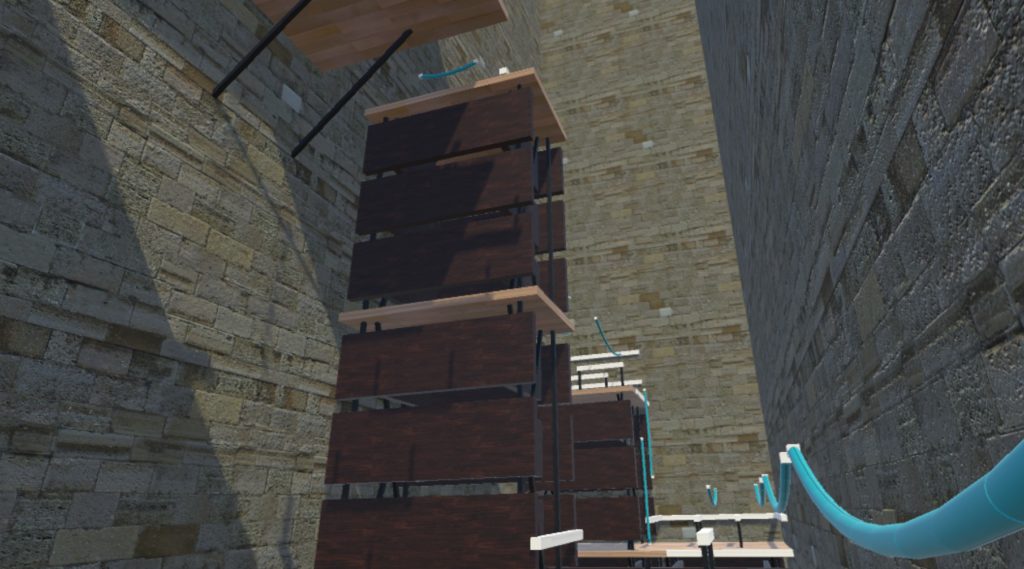
Motivation
When the HTC Vive first launched, many of the VR games in the marketplace used teleportation as the main method of moving around the environment. It was proved to be the way to do movement in VR, as it was the least likely to induce motion sickness. When I saw how common teleportation was, I wanted to try to find a viable alternative locomotion method that is both fun and not likely to induce motion sickness. By attempting to break standards, we can discover the finer details of the genre and provide more options for game developers. I chose to create a rope-based locomotion system as I felt the Vive succeeded with two things, Room-Scale environments and grabbing & pulling motions on objects.

Major Features
Details on implementation and process can be found in the thesis paper below.
- Grab & Pull Based Locomotion
- Any object can be tagged as Climbable.
- Physics Based Ropes
- Players can generate ropes between two surfaces with a specified valid material.
- Simulated Player Mass – Ropes sag based on where the player has grabbed & where the player’s body is relative to the rope.
- Player Launching
- Players can toss themselves off of a rope
- Holding the grab button will auto-grab the first touched grab-able surface, making jumping from rope to rope a breeze.
- Fade Teleport Volumes
- Fades view to black and teleports the player to a safe spot, negating motion sickness.
- Hoisting
- Smoothly eases the player on top of a climbed surface if they place their torso inside a surface.
- Tools
- In Editor drawing of ropes & fade volumes to make placement of prefabs easy.
- Comfort Options
- Players can enable a Comfort Cage mesh to display around them, providing a point of reference when moving around the environment.

Major Takeaways
- When users directly control their movement, users were less likely to feel motion sickness.
- Longer and faster movements that are not directly influenced by the user’s input, such as rope swinging, were more likely to make users experience motion sickness.
- Quick iteration allowed key features to be identified early, and for less successful features to be fixed or removed.
- Don’t be afraid to cut things! If it isn’t adding to the core experience, don’t spend too long trying to make it fit in. Removing a feature can add more development time to key features.
- Comfort Options are helpful. Players have differing tolerances to locomotion in Virtual Reality.
- The choice of a Comfort Cage, while rarely used by testers, was appreciated to have access to if needed.
- Ease into game driving motions, rather than perform them immediately. Gentle, constant velocities are easier on the player’s senses, as opposed to a snap teleport or acceleration movements.
Image Gallery




Download
